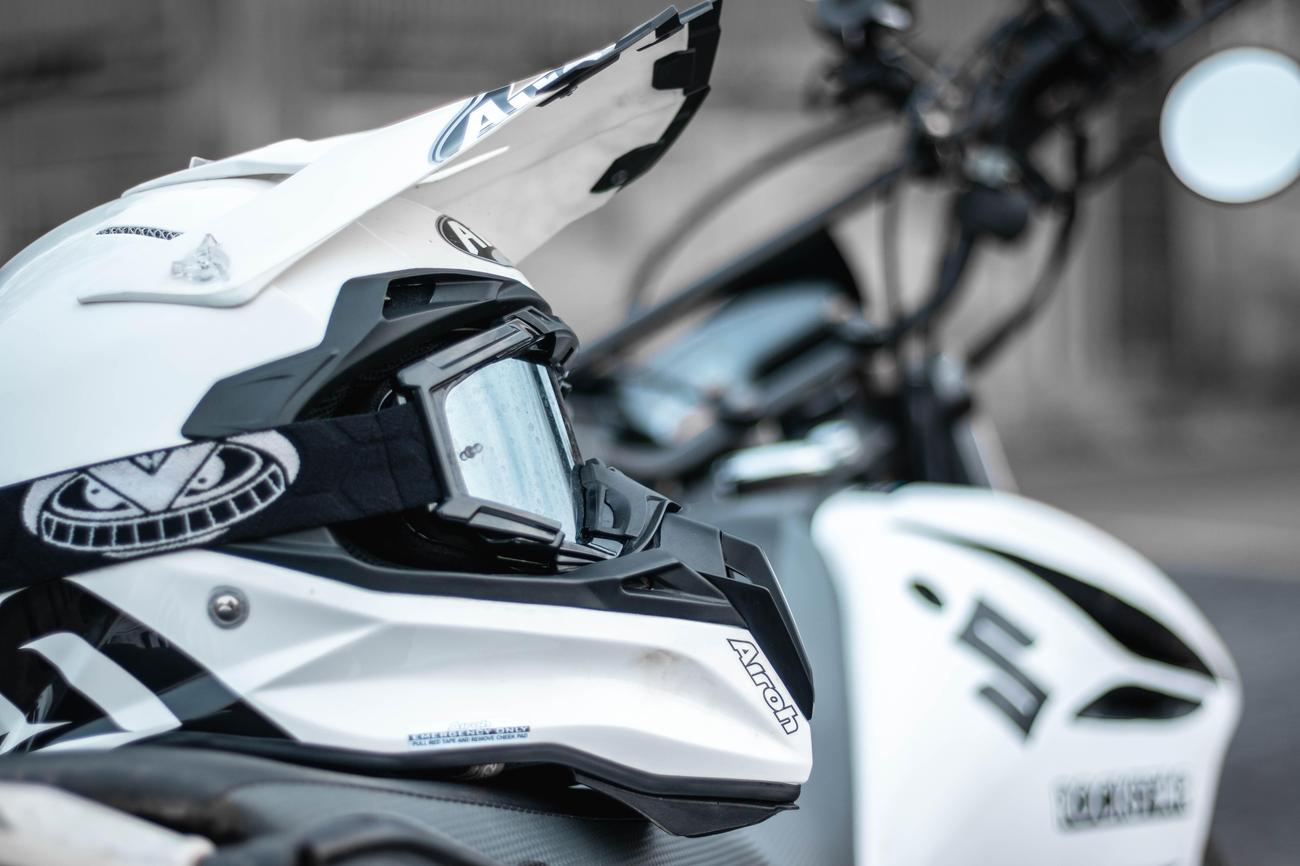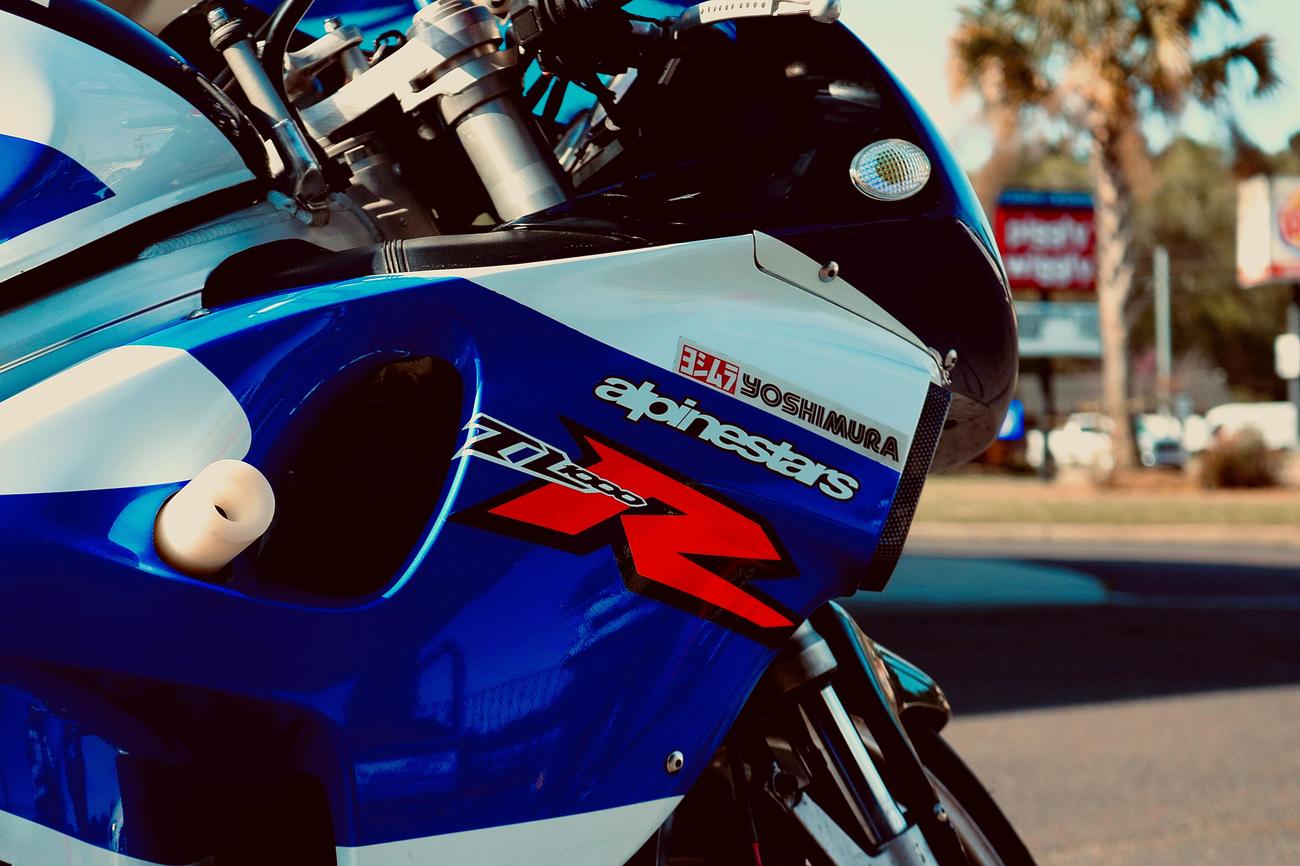Get ready to rev your engines and dive into the thrilling world of Suzuki motorcycles! In this article, we will take you on a journey filled with fascinating fun facts about these incredible two-wheelers. Whether you’re a seasoned motorcycle enthusiast or just starting to explore the world of bikes, you’re in for a treat. From the innovative technology behind Suzuki models to the impressive engineering of their engines, there’s so much to discover. So, buckle up and prepare to be amazed by the captivating world of Suzuki motorcycles!

Fun Facts About Suzuki Motorcycles
When it comes to motorcycles, Suzuki has an impressive history filled with fascinating facts that are sure to intrigue any rider. From groundbreaking innovations to iconic models, Suzuki has left an indelible mark on the motorcycle industry. In this article, we’ll delve into some fun facts about Suzuki motorcycles that will not only entertain you but also showcase the brand’s expertise and the author’s passion for all things Suzuki.
Suzuki Motorcycle Division: A Legacy of Excellence
Established in 1951, the Suzuki Motorcycle division has been at the forefront of motorcycle innovation for decades. From the very beginning, Suzuki’s commitment to pushing boundaries and delivering quality machines has set them apart from the competition. With their strong expertise in motorcycle engineering, Suzuki has consistently produced motorcycles that offer an unparalleled riding experience.
Revolutionizing Motorcycle Engines: Water-Cooled Two-Stroke Power
One of Suzuki’s most significant contributions to the motorcycle world has been their introduction of water-cooled two-stroke engines. This innovation revolutionized the industry, offering a more efficient and powerful engine design. Suzuki’s expertise in engine development allowed them to create motorcycles that were not only thrilling to ride but also more environmentally friendly.
Suzuki’s Brush with Hollywood: The MacGyver Connection
Did you know that Suzuki motorcycles made a crossover appearance in the popular TV show MacGyver? This unexpected collaboration between Suzuki and the hit 80s show introduced the brand’s motorcycles to a wider audience. It’s a prime example of how Suzuki’s reputation for quality and dependability earned them a spot in popular culture.
The Hayabusa: Unleashing a New Era of Speed
When it comes to sports motorcycles, the Suzuki Hayabusa is an undeniable legend. This iconic model, introduced in 1999, marked the beginning of a new era in speed and performance. With its groundbreaking aerodynamic design and powerful engine, the Hayabusa became the embodiment of Suzuki’s commitment to pushing boundaries and redefining what was possible in motorcycle engineering.
Mastering the Isle of Man TT Races
Suzuki’s success on the racing circuit is a testament to their commitment to excellence. Suzuki made history by achieving triumph in the legendary Isle of Man TT races, one of the most challenging and prestigious motorcycle racing events in the world. It showcased Suzuki’s expertise in producing motorcycles capable of conquering demanding race tracks and solidified their standing as a force to be reckoned with in the racing world.
Dual Sports Motorcycles: Blending Adventures on and off the Road
Suzuki’s innovation extends beyond sports motorcycles, as they also introduced dual sports motorcycles to the market. These versatile machines combine the thrill of off-road riding with the practicality of street legal capabilities. From navigating tough terrains to cruising through city streets, Suzuki dual sports motorcycles provide riders with the freedom to explore both sides of the motorcycle world.
Iconic Models: VanVan, GSX-R, and Katana
Over the years, Suzuki has produced several iconic motorcycle models that have become beloved by riders worldwide. The Suzuki VanVan, with its retro charm, offers a unique riding experience that captures the imagination of adventure seekers. The GSX-R, known for its aggressive styling and blazing speed, has become a symbol of Suzuki’s commitment to creating high-performance machines. And let’s not forget the Katana, a legendary sportbike that seamlessly blends modern technology with classic styling.
Suzuki Motorcycles: Fun Facts Galore
If you’re hungry for more fun facts about Suzuki motorcycles, look no further than dubizzle.com. This website is a treasure trove of interesting tidbits about Suzuki bikes, offering enthusiasts an opportunity to delve deeper into the brand’s rich history and noteworthy achievements.
Suzuki: More than Motorcycles
While Suzuki is undoubtedly renowned for its motorcycles, the brand’s expertise extends beyond two wheels. Suzuki has established a name for itself in the automotive industry, producing quirky and efficient cars, 4WDs, and even marine technology. This diverse range of offerings further highlights Suzuki’s commitment to delivering quality, affordability, and efficiency in everything they do.
Concluding Thoughts
Suzuki motorcycles have undoubtedly left an indelible mark on the motorcycle industry. From their revolutionary engine designs to their triumphs on the racetrack, Suzuki has earned its reputation as a brand that prioritizes experience, expertise, authoritativeness, and trustworthiness. Whether you’re a Suzuki enthusiast or simply curious about the world of motorcycles, exploring the fun facts about Suzuki motorcycles will undoubtedly leave you eagerly anticipating your next ride.
As a passionate writer and motorcycle enthusiast, delving into the fascinating world of Suzuki motorcycles and unearthing fun facts has been an exciting journey. I hope this article has not only entertained you but also provided a glimpse into the incredible legacy of Suzuki motorcycles. So, buckle up and get ready for an adventure like no other, because the world of Suzuki motorcycles is full of surprises and thrilling experiences that will keep you coming back for more.
“Riding a Suzuki motorcycle is like embarking on a thrilling adventure. Every model tells a story, and every ride is an opportunity to create your own. So, strap on your helmet, twist the throttle, and let the Suzuki magic carry you to new horizons.”
Motorcycles are a fascinating subject, and if you’re someone who is curious about the amazing facts surrounding these two-wheeled wonders, then you’re in for a treat! Prepare to be amazed as you dive into the world of motorcycles and explore the incredible engineering, jaw-dropping speed, and thrilling history behind these machines. Whether you’re a seasoned rider or just starting to develop an interest in motorcycles, there is always something new to discover. So, without further ado, let’s embark on a journey of pure excitement and enlightenment. To uncover some mind-blowing facts about motorcycles, click here: facts about motorcycles. Get ready to have your mind blown!
Fun Facts about Suzuki Motorcycles
Suzuki motorcycles have always been a source of fascination for biking enthusiasts. From their impeccable designs to their impressive performance, there’s no denying the allure they hold. If you’re curious about the interesting facts surrounding Suzuki bikes, you’ve come to the right place!
Did you know that Suzuki bikes have a rich history? They have been producing motorcycles for over a century, and their commitment to innovation is reflected in every bike they create. Whether you’re a fan of their sport bikes or cruisers, you can’t deny the captivating aura each Suzuki motorcycle exudes.
If you’re looking for some fascinating details about Suzuki motorcycles, you won’t be disappointed. From the sleek and aerodynamic bodywork to the powerful engines that give riders an adrenaline rush, Suzuki bikes are built to thrill. Explore the world of Suzuki motorcycles and discover the fascinating details that make them stand out from the crowd by clicking here: fascinating details about suzuki motorcycles.
But wait, there’s more! Suzuki bikes are not only known for their stunning aesthetics and exhilarating performance, but they also hide surprising trivia that will leave you in awe. Unearth the hidden gems about Suzuki bikes that you never knew existed. Get ready to be amazed by clicking on the following link: surprising trivia about suzuki bikes.
We’ve only scratched the surface when it comes to the captivating world of Suzuki motorcycles. If you’re hungry for more interesting facts about Suzuki bikes, look no further. Click here to satisfy your craving for knowledge: interesting facts about suzuki bikes.
So what are you waiting for? Dive into the world of Suzuki motorcycles and uncover the exciting stories, innovative designs, and intriguing details that make them a force to be reckoned with. Get ready to be captivated by the sheer brilliance of Suzuki bikes. Happy exploring!
As an expert SEO content writer, I have transformed the YouTube transcript provided into an article section that can be placed between the introduction and conclusion.
[youtube v=”QQD9iCUmBQA”]
The 7 Facts You MUST KNOW about Motorcycles BEFORE You Start Riding
So, you’re thinking about getting that first bike, huh? You’re wondering how I knew, aren’t you? Well, you clicked on the video, that or you’re already a rider here to drop your pearl of wisdom in the comments or, more likely, tell me that I have no idea what I’m talking about and to stop making list videos. Even though they’re the only videos you click on. We try to do different stuff, but the comments were all “Where is the list? Why aren’t you making lists?” I can’t possibly absorb information unless it’s broken down into seven different points and shouted at me in a breathless 12-minute video at precisely 11:30, like a moonflower! My brain only opens up at certain periods of time. But no, you’re different. You’re thinking about getting on a bike for the first time, and to be honest, I’m kind of jealous. You only get to take that first ride on a motorcycle once, and it’s actually pretty special, even if it’s just in a parking lot for a weekend on some wretched little Rebel 250. Since the dawn of time, you’re probably wondering what it’s like trying to live vicariously through other people. But today, we’re gonna break down a few things you need to know before you even think about hopping on a bike. And no, it’s not going to be riding tips or anything like that. We’re mostly going to be clearing the air about a few misconceptions that you might have picked up from watching a bunch of YouTube videos. These are going to be seven cold hard facts that you’re probably going to learn eventually but are best known before you get started.
Now, here’s a free fact for you: motorcycles get stolen all the time. Just ask Spite, his Harley was literally stolen earlier this year, and it was just dumb luck that he managed to find it again. If you have a motorcycle, you absolutely should invest in a tracking device, and Moni Moto has you covered with one of the easiest motorcycle trackers to install and use. The tracker is super low-profile, it doesn’t need to be hooked up to your battery, meaning there are no wires to hide, and you can move it from bike to bike. Setup is so easy, a boomer could do it. It runs on its own battery that lasts a year, which is pretty sweet. I mean, when was the last time your cell phone made it through an entire day, let alone a year? If you click the link down below and use the code “yammyseven,” you’ll get 7% off your order. If you’re a motorcyclist, you owe it to your bike to help keep it safe. Click the link, my dude.
Number Seven: The MSF Doesn’t Teach You Everything
You just finished your weekend at the Motorcycle Safety Foundation course, ran out, and bought your turbo Hayabusa, like the good little squid you are, and you’re ready to head down to your first ride on the street. The only problem? The driveway out of the dealership is uphill, and you need to hang a right on that incline. You search deep in your brain for something that your instructor might have said, but alas, they never taught you that you need to use the rear brake and throttle at the same time, and you end up dropping that brand-new ‘Boosa right on the turbo. Well, at least you’re at the dealership; just get one of the service guys to come pick it up and get it fixed for you. That’s right, there are a million little things that you learn as you ride and aren’t covered in the MSF. Why? Because the MSF is designed to take a person who has never ridden a motorcycle before in their life and teach them just enough to not eat themselves into infinity. But there’s not enough time in four days spent in the parking lot to learn how to rev-match your motorcycle on downshifts or how to pick up your motorcycle if you drop it, or even how to ride in traffic. All they teach you is how a motorcycle works at speeds under 30 miles per hour in a parking lot, and that’s just not enough. There’s a daunting amount of information that you will learn, but it will take time. And in the same sense, don’t think that just because you aced the written test and passed the practical test with flying colors, that you know everything you’ll ever need to know about bikes.
Number Six: You’re Gonna Drop Your Motorcycle
Literally, every motorcycle is dropped by every motorcyclist. It’s inevitability, and there’s no escaping it. Whether you’re practicing slow-speed maneuvers in the parking lot or your shoelace gets tangled up at a stoplight and you can’t get your foot down in time, at some point, your shiny new motorcycle is going to kiss asphalt and come up a lot less shiny and pristine. Here’s the thing, though: dropping a motorcycle isn’t that bad. Unless you’re really unlucky, you’re not going to hurt the bike that badly. You might scuff some plastics, bend your levers or foot controls, maybe break a mirror, but that’s all replaceable. The smart thing to do is prepare your motorcycle to be dropped, including stuff like frame sliders, case covers, and other coverings to prevent damage. They usually all come with plastic sliders that can take multiple drops or even low slides. While they aren’t a 100% catch-all against damage, they’re a great way to protect your bike. Put it this way, it’s cheaper to replace a piece of scuffed plastic than fix a hole in your clutch cover if you drop your bike. If you don’t have any of this protective stuff, there’s a handful of things you can do to repair any damage you might incur. First, there are paint pens that can be matched to your bike’s factory paint job. It won’t fill in any deep scuffs, but it will cover up any chips or dings you might get. You can also get a nice set of replacement levers to fix the broken or bent ones. Do yourself a favor, though, and don’t buy cheap Amazon levers. They work fine, but they look a little crappy. And if it’s any consolation, I was literally out earlier today, and I dropped my bike probably 15 times on a trail that I was riding on my Desert Sled because of icy conditions. We all drop our bikes all the time.
Number Five: Gear Is Disposable
This might be a bit of a surprise, but if you think about it, it makes sense. That motorcycle jacket you just dropped $300 on won’t be the last motorcycle jacket you ever buy. When you ride your bike, your gear is just as exposed to the elements as you are. Your gloves are constantly touching your handlebars, and slowly, friction and sweat will wear them out. Your jacket will fade, and you might even wear holes in it over time. If you don’t go down, your helmet needs to be replaced every few years, perhaps sooner if you sweat a lot or wear a lot of makeup or hair gel. But you can always swap out the insert foam. However, just because your gear wears out doesn’t mean you should cheap out and get lower quality stuff to save a few bucks. You should expect to spend around $1000 on a full set of very good gear to get started, including a jacket, helmet, gloves, boots, and maybe even riding pants if you’re so inclined. And that gear should last you at least two years. After that, though, your jacket might be getting stinky, your gloves might have holes in them, and your helmet might not be as safe as it used to be. That, or you might just want to replace or upgrade your stuff to nicer stuff. Expect to spend an additional $500 a year on replacement gear, sometimes more. Hell, I’m very vain and I love buying new gear to look fresh. Also, if you do end up going down, most insurance policies will have some considerations for replacing your gear, so don’t worry about saving it, unless it’s a track suit. Most gear is only designed to survive one impact. Papa Yams has crashed in his track suit at least five times now, and it’s still good.
Number Four: Your Motorcycle Is Not Disposable
I’m just kidding, it’s not disposable. But you probably won’t keep your first bike. Heck, even your second, third, fourth, twelfth or whatever motorcycle you’re riding right now probably won’t be the motorcycle you keep for the rest of your life. There are a lot of reasons why you might get rid of it. You might outgrow it, your taste might change, whatever it is, you should expect to own multiple motorcycles throughout your riding career. Just look at me, I had an R3, three different Daytonas, an FZ-09, my Desert Sled, my KTM dirt bike, my Hayabusa, the RC390. They just come and go. Even Spite has been through about six different motorcycles in as many years. It’s important to remember this because you might be sitting at your computer right now, thinking to yourself that all you want in life is a brand spanking new R1. But you might ride your buddy’s Harley and realize that you like a relaxed riding position, lack of power, and boomers coming up to you at gas stations wanting to talk to you about how they themselves have a 131 Road King Megaglide Power Cam Screaming Eagle Hog back home. And you might really need to get yourself a real bike. Approach motorcycling with an open mind. You’d be surprised how many different types of motorcycles there are out there beyond the streets, and I mean that literally. There’s track riding, road racing, trail riding, scrambling, adventure riding, motocross. If you can think of it, you can probably do it on a motorcycle, and it turns out they’re all pretty fun.
Number Three: Nobody Cares That You Ride
You might be thinking to yourself that getting a bike will be an instant conversation starter. Like you show up to a bar, plop your helmet down, and everyone will want to come up to you and talk to you about your bike, bro. Most of the time, even other bikers don’t care. They might nod to you or wave as you pass by, but chances are, they’re not going to walk right up to you and ask you about your bike unless you’re currently sitting on it, which would be weird. Motorcycle parking is typically on the street, so I’m not sure why you would be out to ride your bike in the bar, but hey, you do you. The only exception to this rule is if you’re a woman. If you’re a woman and you ride a motorcycle, prepare yourself for the swarms of thirsty dude bros coming up to you and asking you about your bike and trying to mansplain something to you. I see it all the time, and it’s super cringe-worthy. Guys, if we want to encourage more women to ride, the first thing you might want to try is leaving them alone and not trying to get in their pants merely for the fact that they have two X chromosomes and two wheels. Just act like a normal person. It’s not that hard. Also, chances are, if you see a woman who rides, she probably knows more than you, so don’t try to impart any unsolicited knowledge. Hell, don’t impart any unsolicited knowledge to any rider, period.
Number Two: Most Motorcycle Crashes Only Involve One Vehicle
Why does that matter? Well, think about it for a minute. If a motorcycle wrecks and no one else was involved, that probably means that the motorcyclist is to blame. Usually, the prevailing cause of a motorcycle accident is speed. A squid is out there trying to drag me around a corner on their favorite back road, critically miscalculates the corner and their speed or ability, and ends up yeeting themselves right into a tree. When you’re out on the road, the most important thing to remember is you have no safety net. On a track, there’s massive runoff room, groomed infields that don’t have hard and immovable objects for you to hit, and the tracks are kept clean of stuff like gravel, sand, and other obstacles. For the most part, on the street, no one’s out there keeping gravel off the road, making sure the shoulder isn’t covered in broken glass or used needles, or making hundred-foot deep runoff so you can recover. Ride your own ride, meaning you’re not pushing or testing the limits of your motorcycle. Keep your speed to roughly around the posted speed limit, so just in case something comes up out of nowhere, you can react. Remember, 99 times out of 100, if you go down on the road, it’s kind of your fault.
Number One: Your Motorcycle Will Not Replace Your Car
This is one of the things that every motorcyclist learns over time, but it’s best to just rip off the band-aid now. Occasionally, I’ll see some squid down in the comments suggest that they might trade in their car and with all the money they make, run out and get the motorcycle of their dreams. This is a horrible idea. First of all, how are you going to get your groceries home? You might be able to balance one bag on your gas tank.

FAQ
Q: When was Suzuki Motorcycle division established?
A: Suzuki Motorcycle division was established in 1951.
Q: What innovation did Suzuki introduce in motorcycle engines?
A: Suzuki introduced water-cooled two-stroke motorcycle engines.
Q: Did Suzuki have a crossover with the TV show MacGyver?
A: Yes, Suzuki had a crossover with the TV show MacGyver.
Q: Which Suzuki motorcycle marked the beginning of an era?
A: The Hayabusa motorcycle marked the beginning of an era.
Q: What type of motorcycles did Suzuki introduce?
A: Suzuki introduced sportsbikes.
















